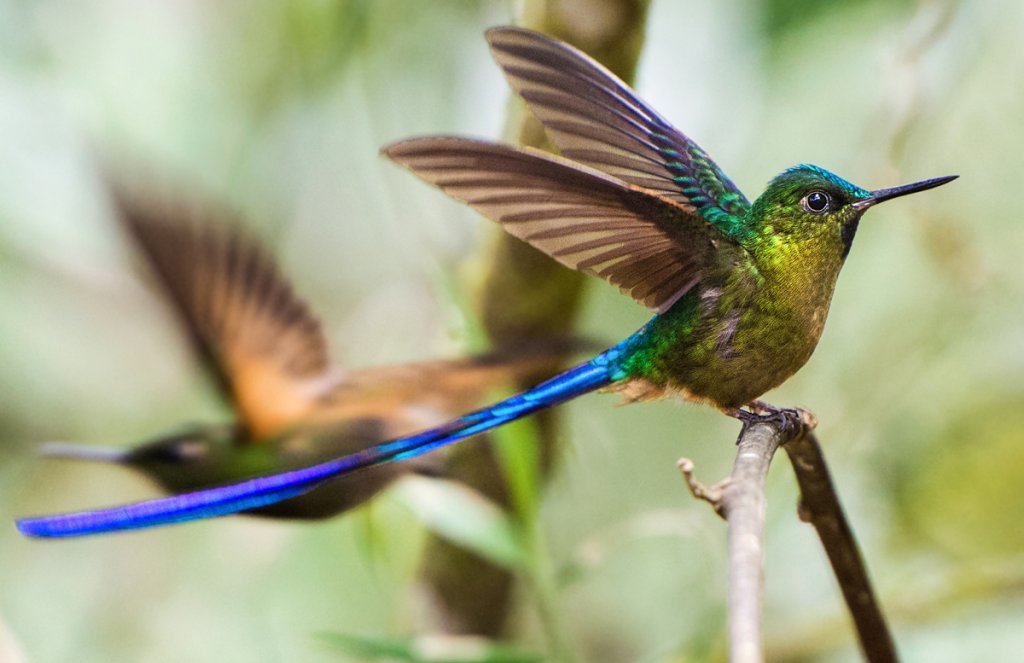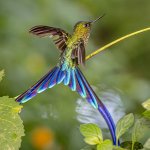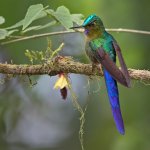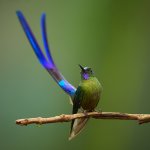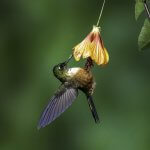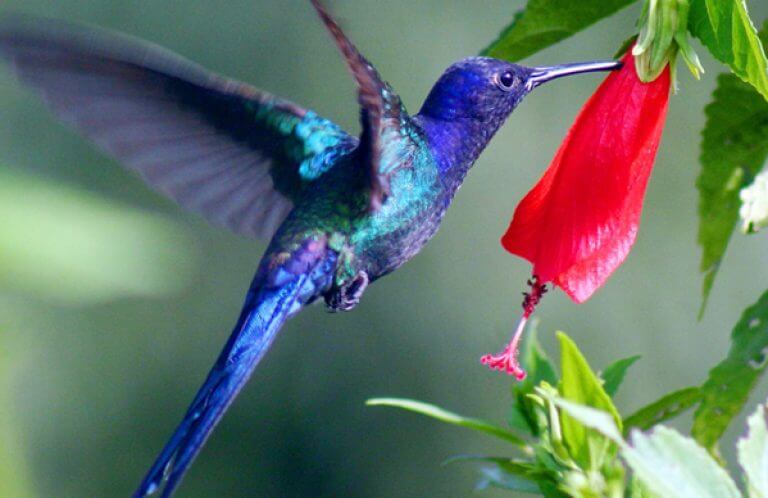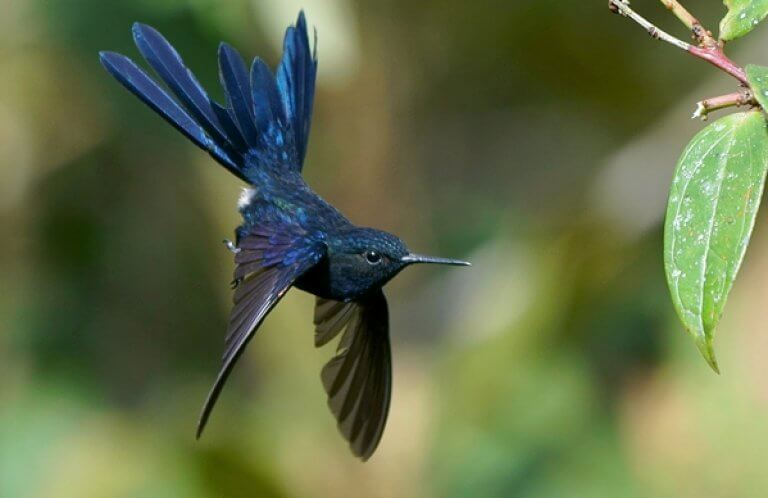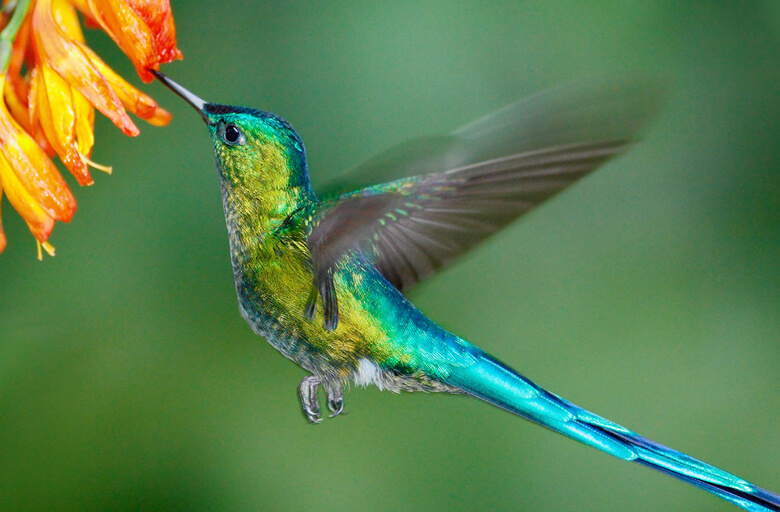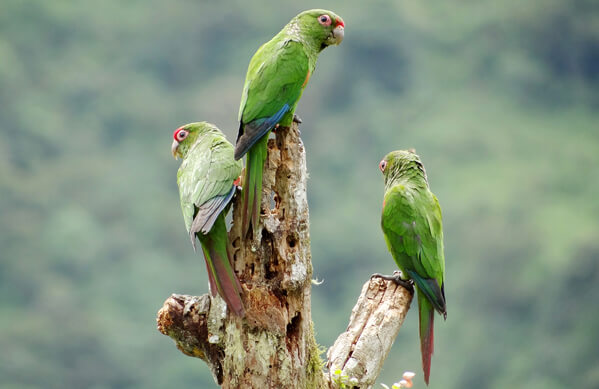About
The male Violet-tailed Sylph is a symphony of shimmering greens, blues, and purples, with long, iridescent violet and blue tail feathers. This colorful train makes up more than half of the bird's 7-8” length – a feature seen in other male hummingbirds such as the Swallow-tailed Hummingbird and Marvelous Spatuletail. As is usual in the hummingbird family, the female Violet-tailed Sylph is smaller and more subdued in color, without the striking long tail. Both sexes have short, straight, black bills.
Once considered a subspecies of the Long-tailed Sylph, the Violet-tailed Sylph was split into a separate species due to differences in its structure, behavior, and range.
Fit Males, Long Tails
The male Violet-tailed Sylph's spectacular tail is thought to be an advertisement of his breeding fitness. Only the strongest and healthiest males have long and colorful tails, which they display to full effect during display flights for prospective mates. Female hummingbirds recognize and reward the fittest males by mating with them and nesting in their territories.
Song and Sounds
The Violet-tailed Sylph vocalizes in a series of short, high-pitched psit psit psit notes. Other calls include repeated, short, buzzy calls and high-pitched twittering.
Listen here:
And here:
Breeding and Feeding
Extra Nests
The male Violet-tailed Sylph performs courtship flights to attract a mate and defend nesting and feeding areas. Once mated, a pair will work together to build their nest, a domed structure of moss and spider web with a side entrance, hidden within a larger clump of moss or epiphytes. Here the female sylph lays two white eggs, which she incubates alone for several weeks. After hatching, the female feeds her chicks by regurgitation. The young hummingbirds develop quickly and fledge about three weeks after hatching.
Violet-tailed Sylphs also build nests outside of their breeding season, which they use as night roosts — probably an adaptation to their cold, wet cloud forest surroundings. This habit of building extra nests fooled many scientists into thinking that this species bred year-round.
Following a Feeding Circuit
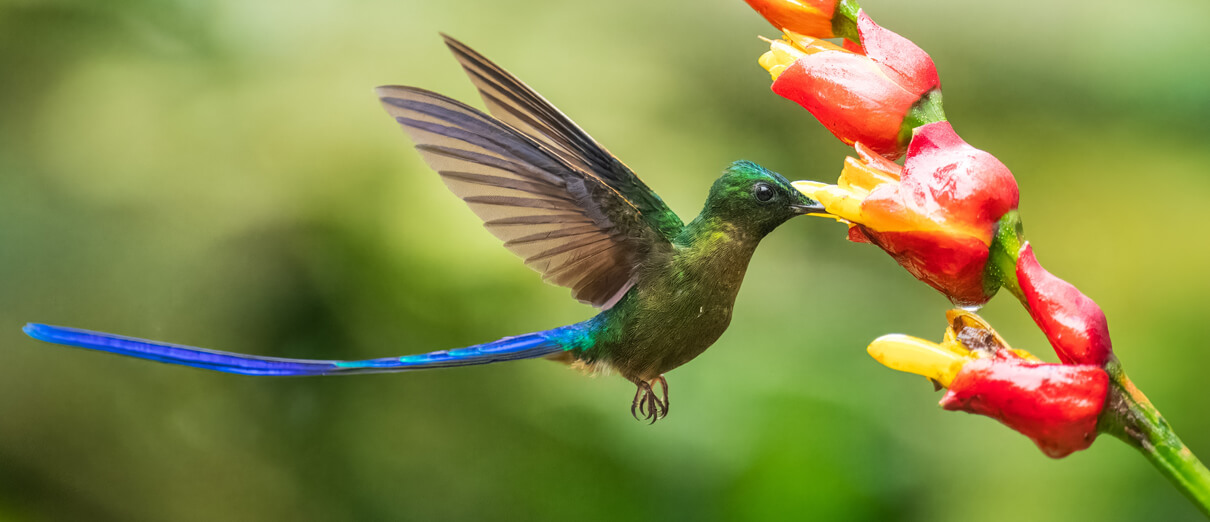
Like other hummingbirds, the Violet-tailed Sylph feeds on nectar and small insects. This species can usually be seen foraging near the ground along forest edges, following a set circuit of flowering feeding sites. This systematic feeding behavior, called traplining, is employed by many hummingbird species, including the Royal Sunangel and Sword-billed Hummingbird. The Violet-tailed Sylph also obtains nectar by clinging to flowers and piercing the bases with its short bill. In addition, it captures tiny insects in mid-air and gleans them from vegetation.
Region and Range
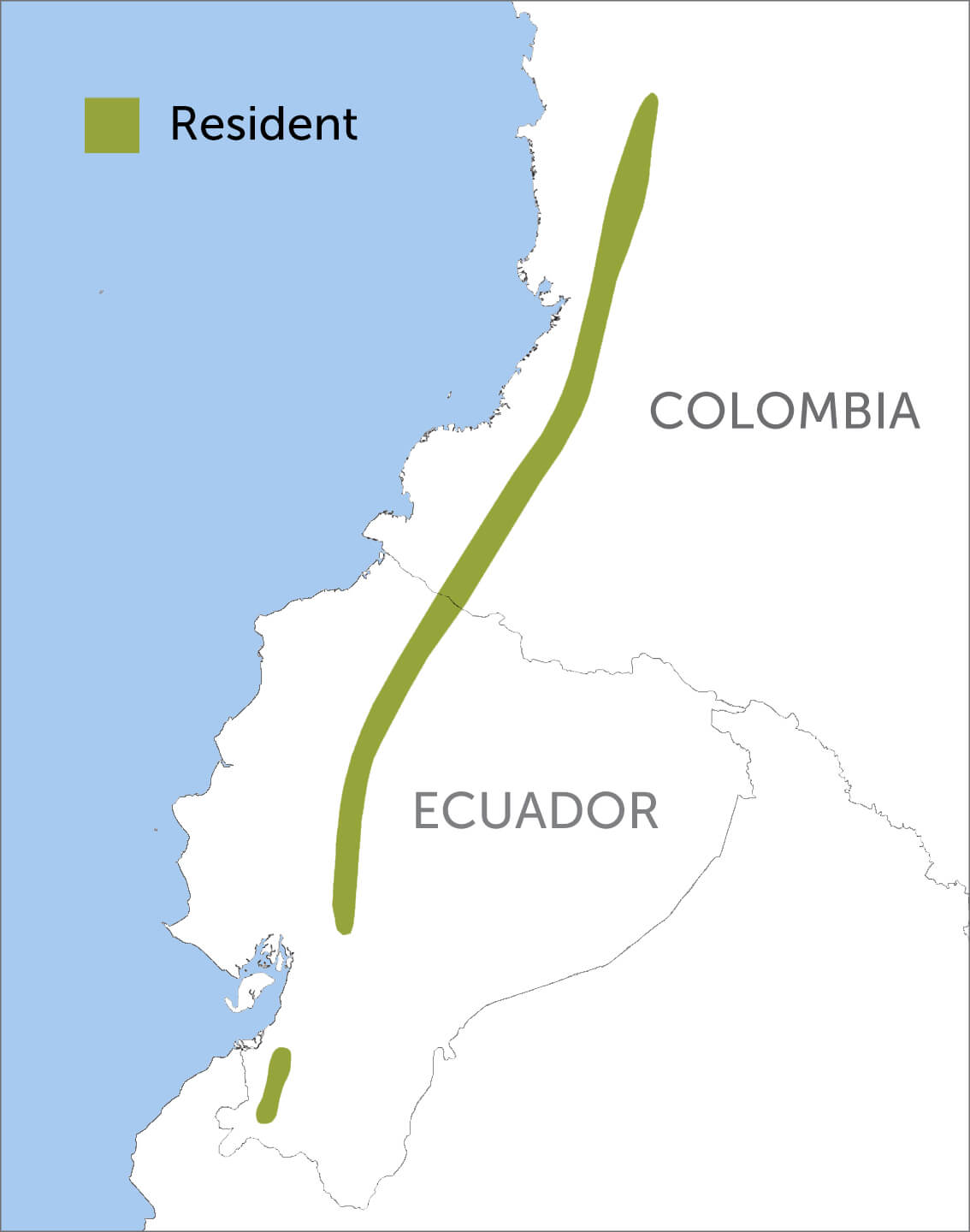
The Violet-tailed Sylph is resident along the Pacific (western) slope of the Andes in Colombia and Ecuador in misty, mossy cloud forest habitats at around 3,200 feet. It regularly makes short altitudinal movements to follow the flowering seasons of various plants. This hummingbird's range sometimes overlaps with that of its close relative, the Long-tailed Sylph, but the Violet-tailed can be distinguished by its eponymous tail feathers, while the Long-tailed Sylph's tail feathers are green and blue.
Conservation

Help support ABC's conservation mission!
The Violet-tailed Sylph is still considered fairly common, and it can tolerate human-altered landscapes to some extent. However, this beautiful hummingbird still faces threats from habitat loss and degradation.
ABC and its partners protect habitat in five reserves within the Violet-tailed Sylph's range, including Buenaventura in Ecuador, which protects the Endangered El Oro Parakeet, and the Cerulean Warbler Reserve in Colombia, where neotropical migrants such as the Rose-breasted Grosbeak, Summer Tanager, and Cerulean Warbler winter.
Get Involved
Many of the rarest bird species in the Western Hemisphere remain relatively unknown. You can learn more about these birds and the threats they face by signing up for ABC's Bird of the Week email series, which frequently highlights these fascinating birds.
American Bird Conservancy and our partners throughout Latin America and the Caribbean have created and expanded more than 100 bird reserves, which protect upward of 1.1 million acres of vital habitat. Together, we've planted more than 6.8 million trees, helping to restore degraded and damaged habitat. You can help us continue to protect endangered birds by making a gift today.





































